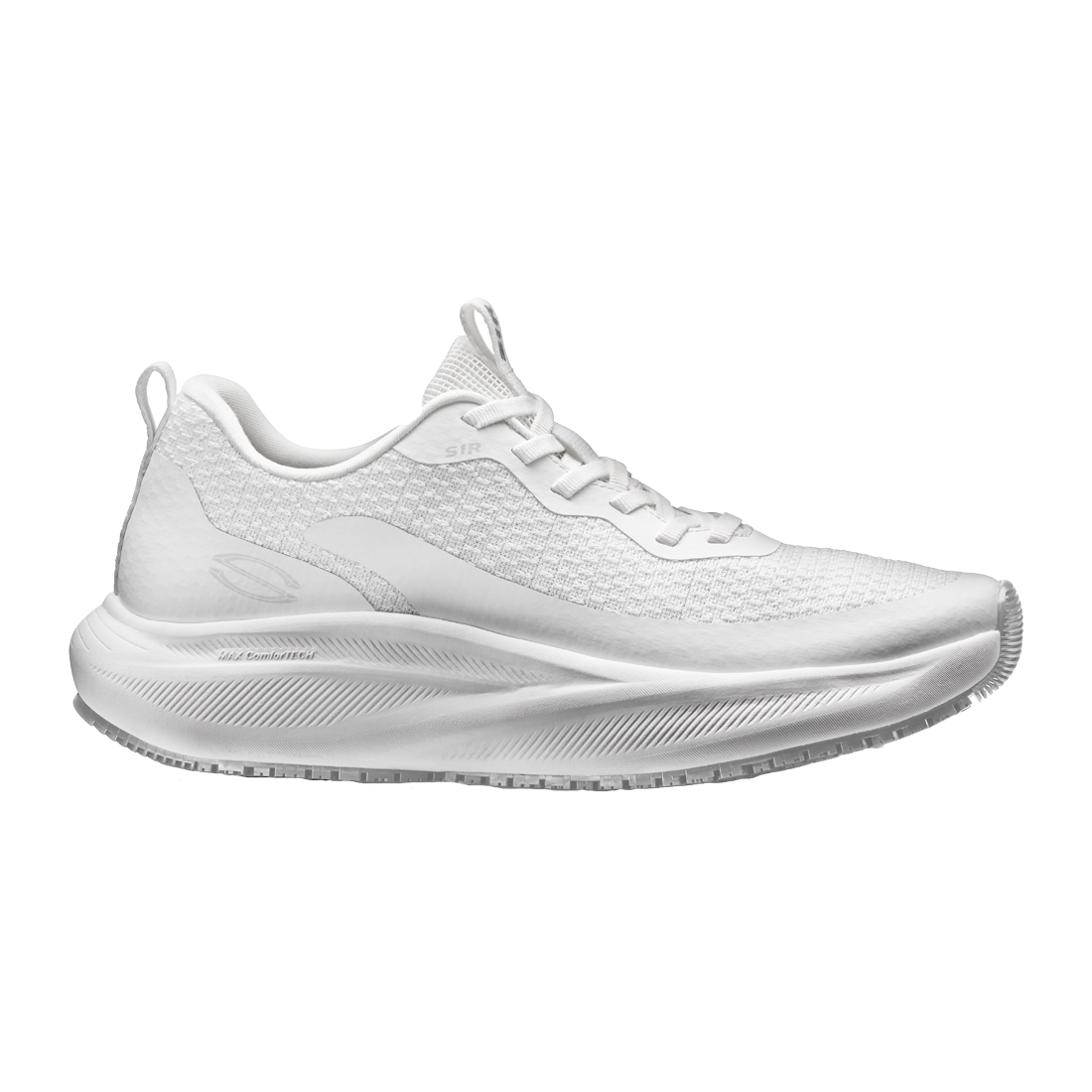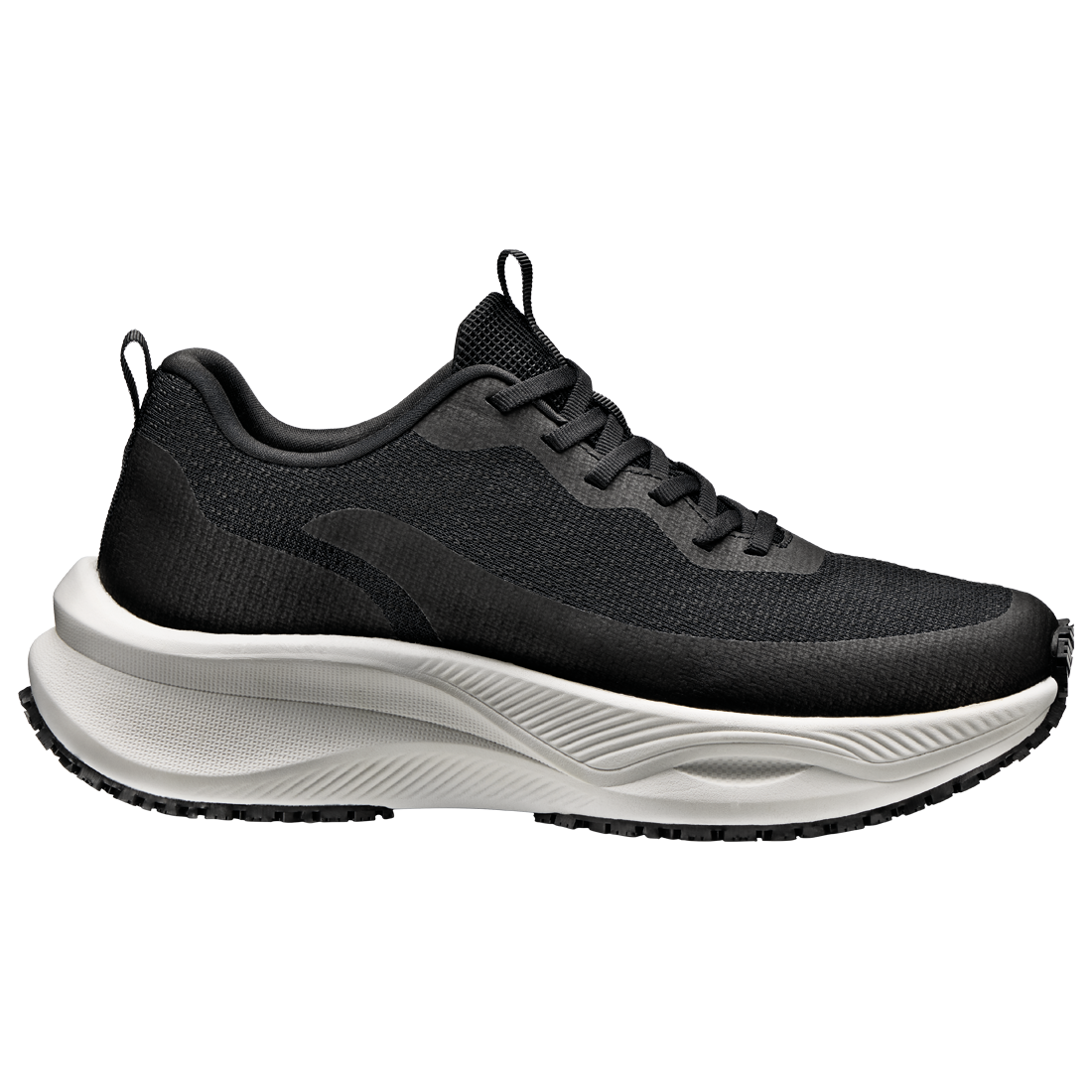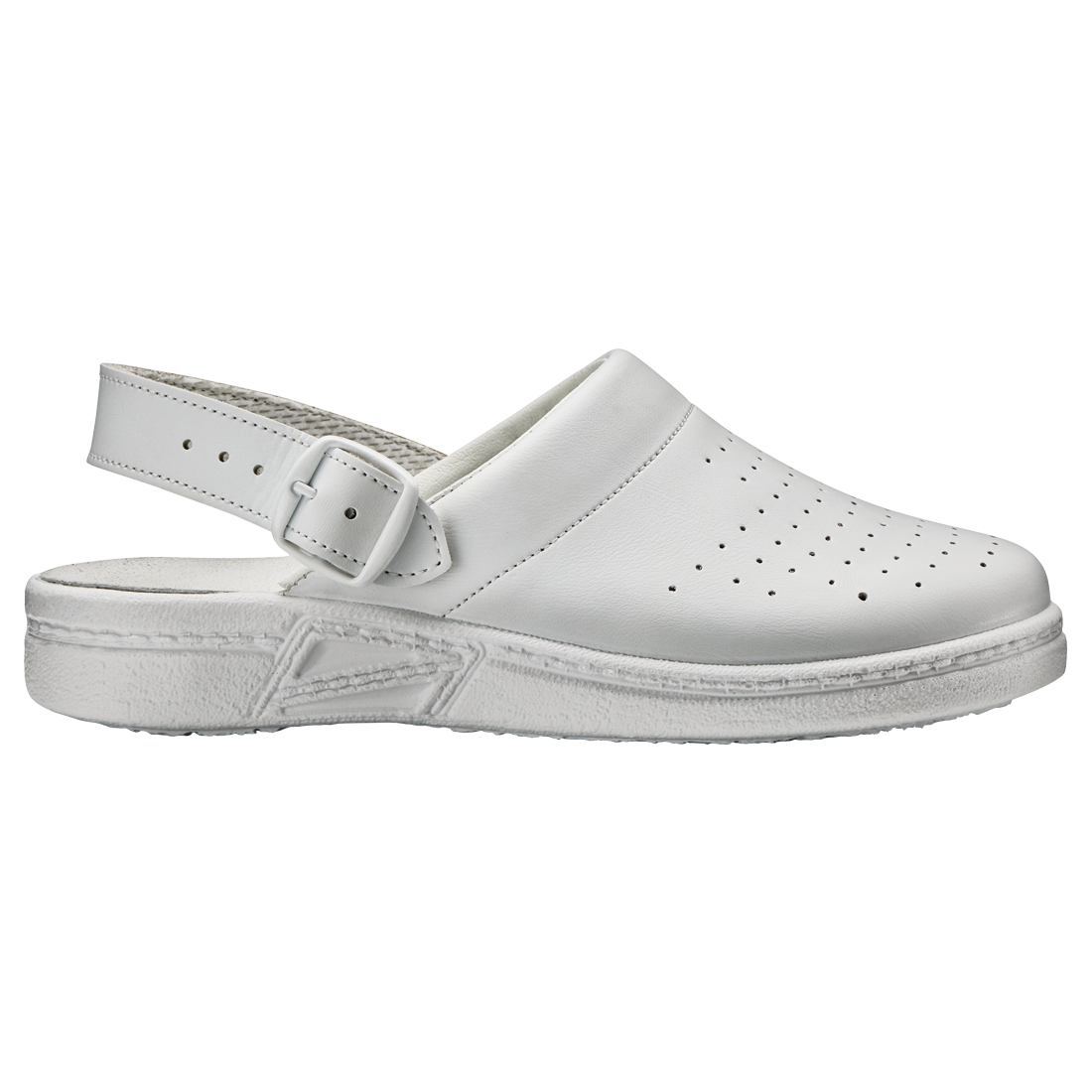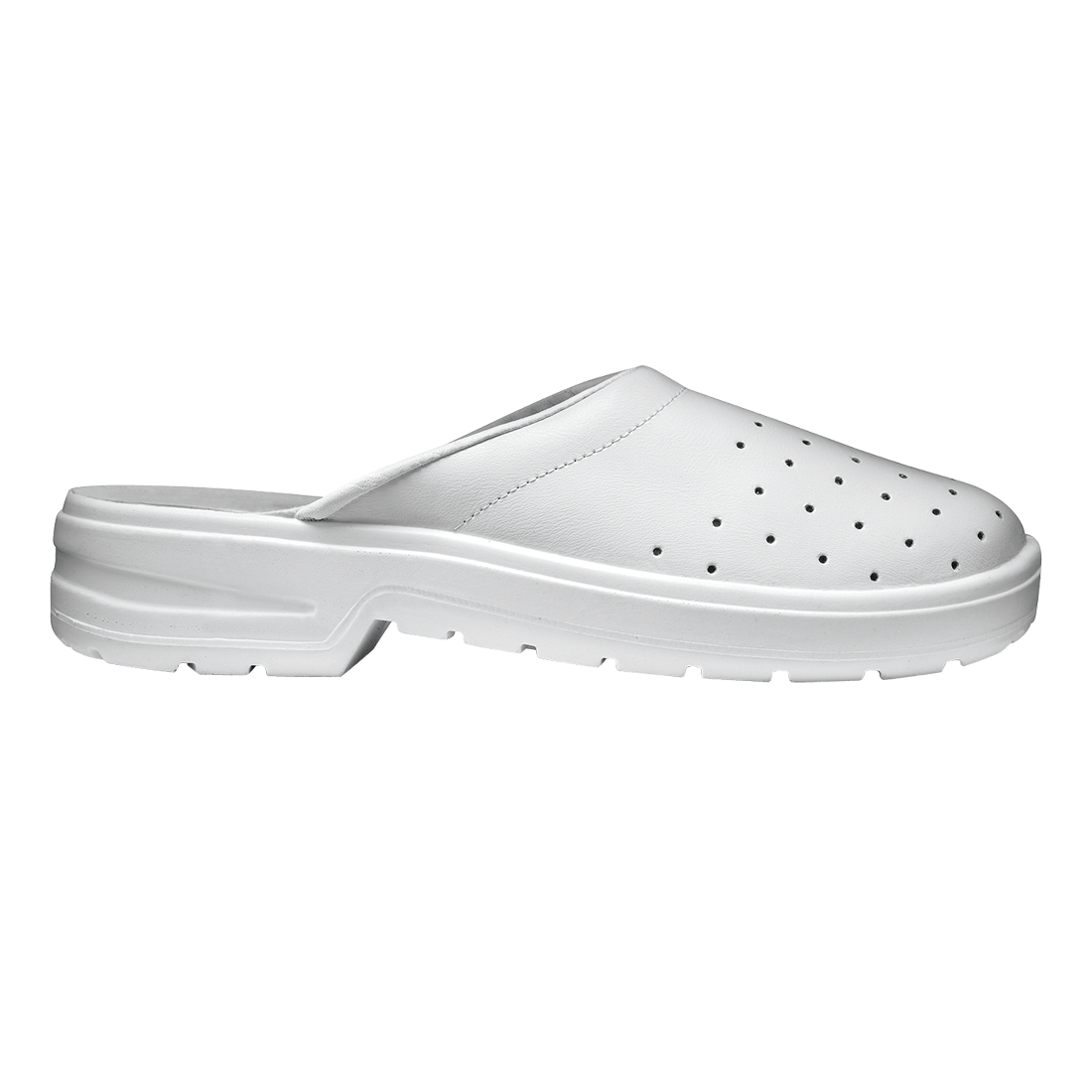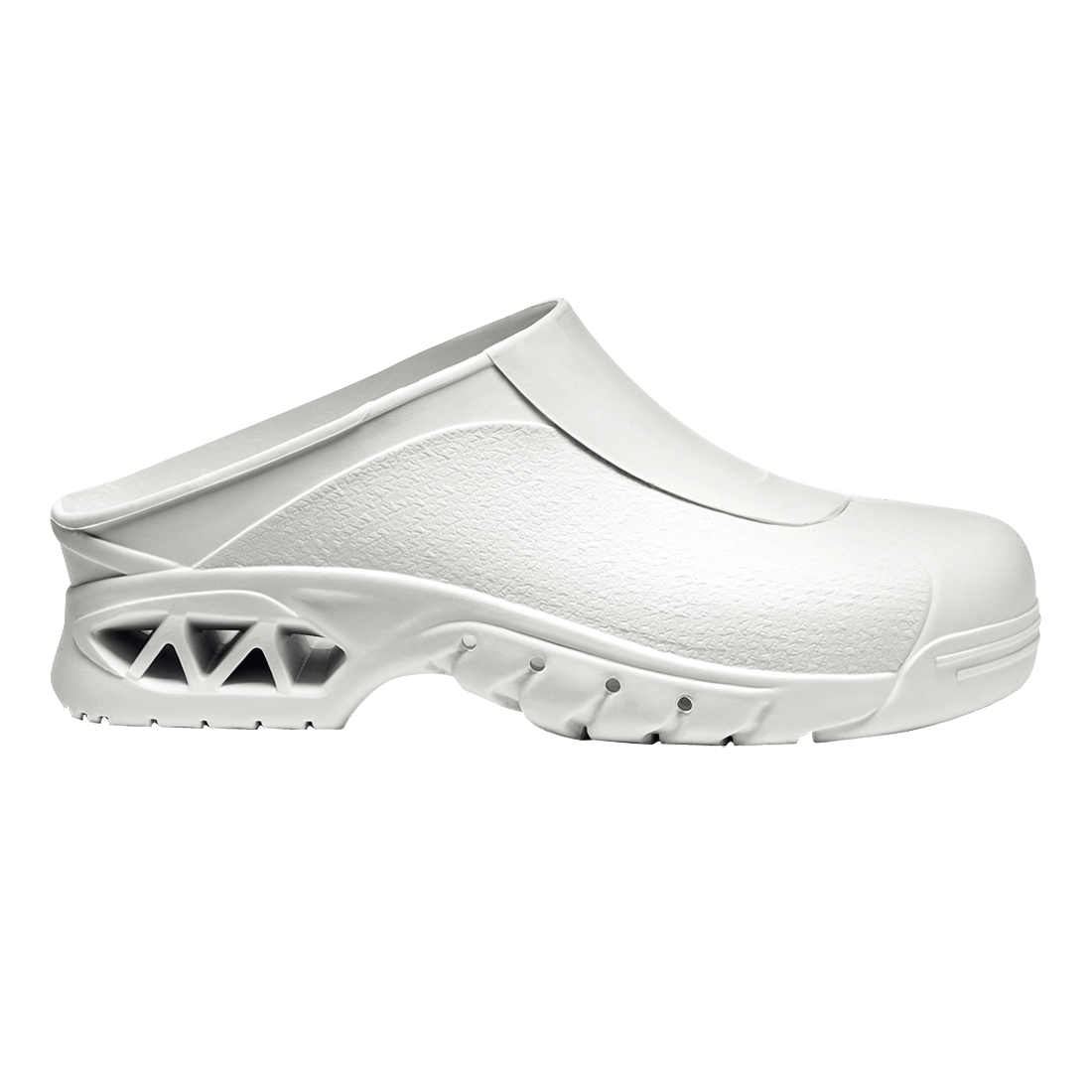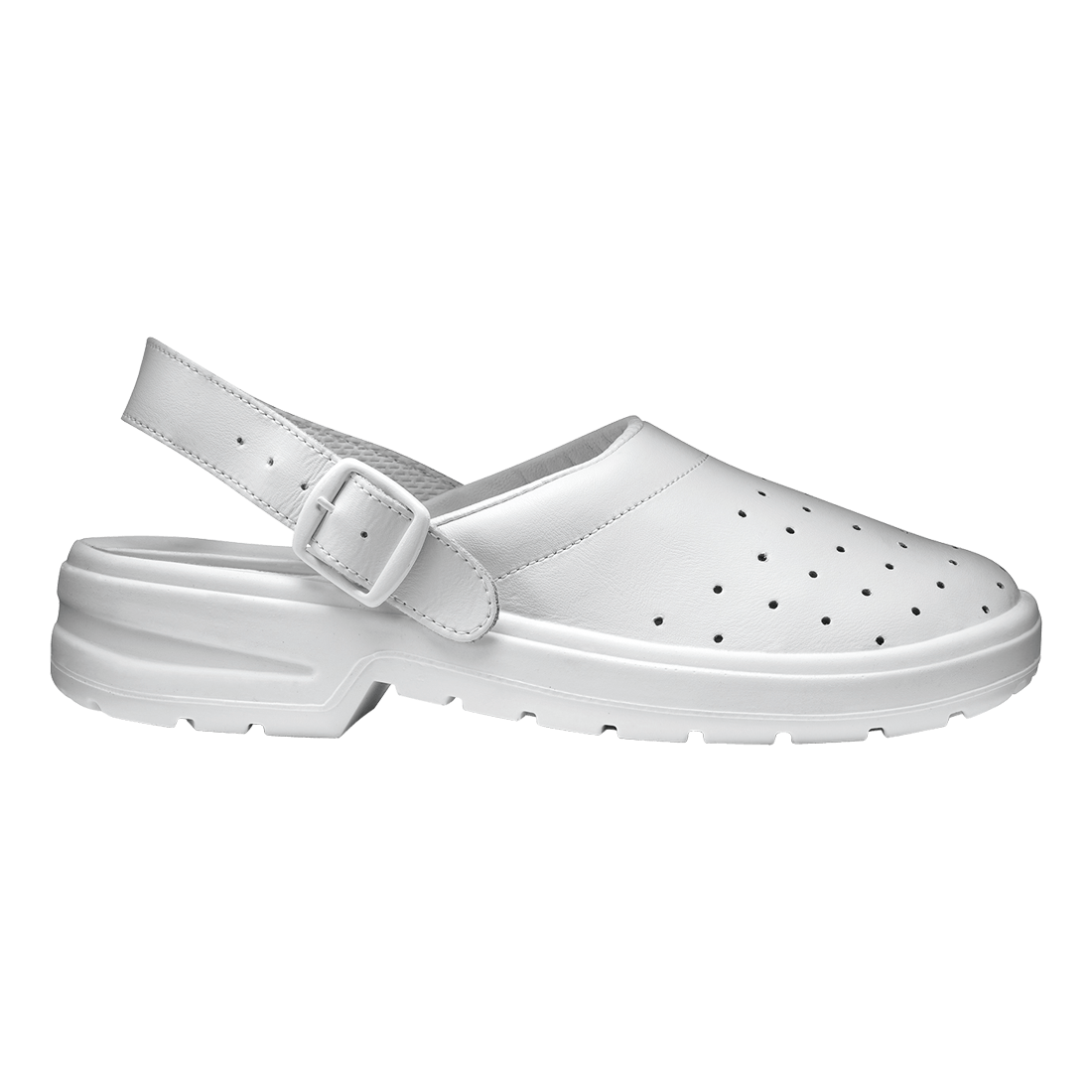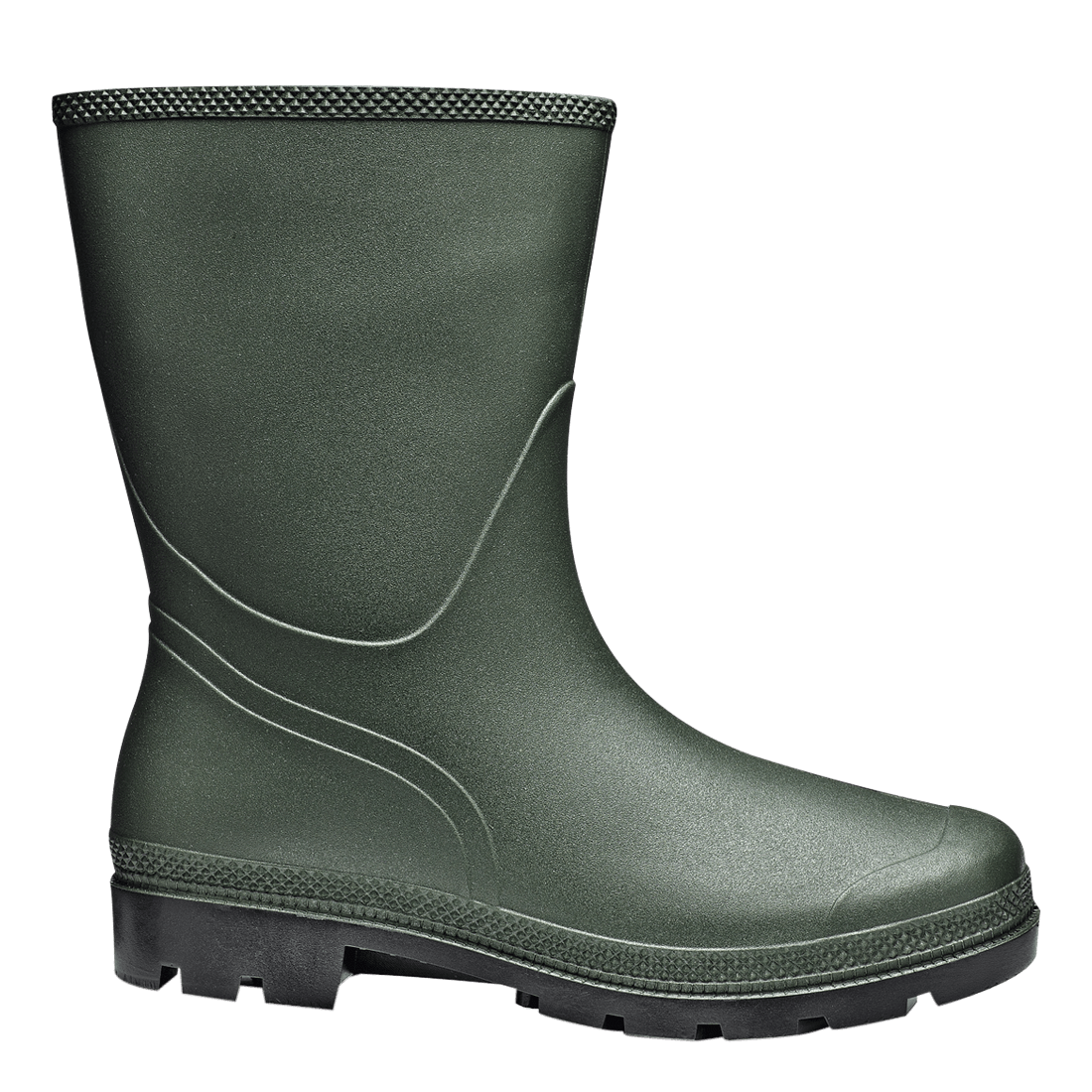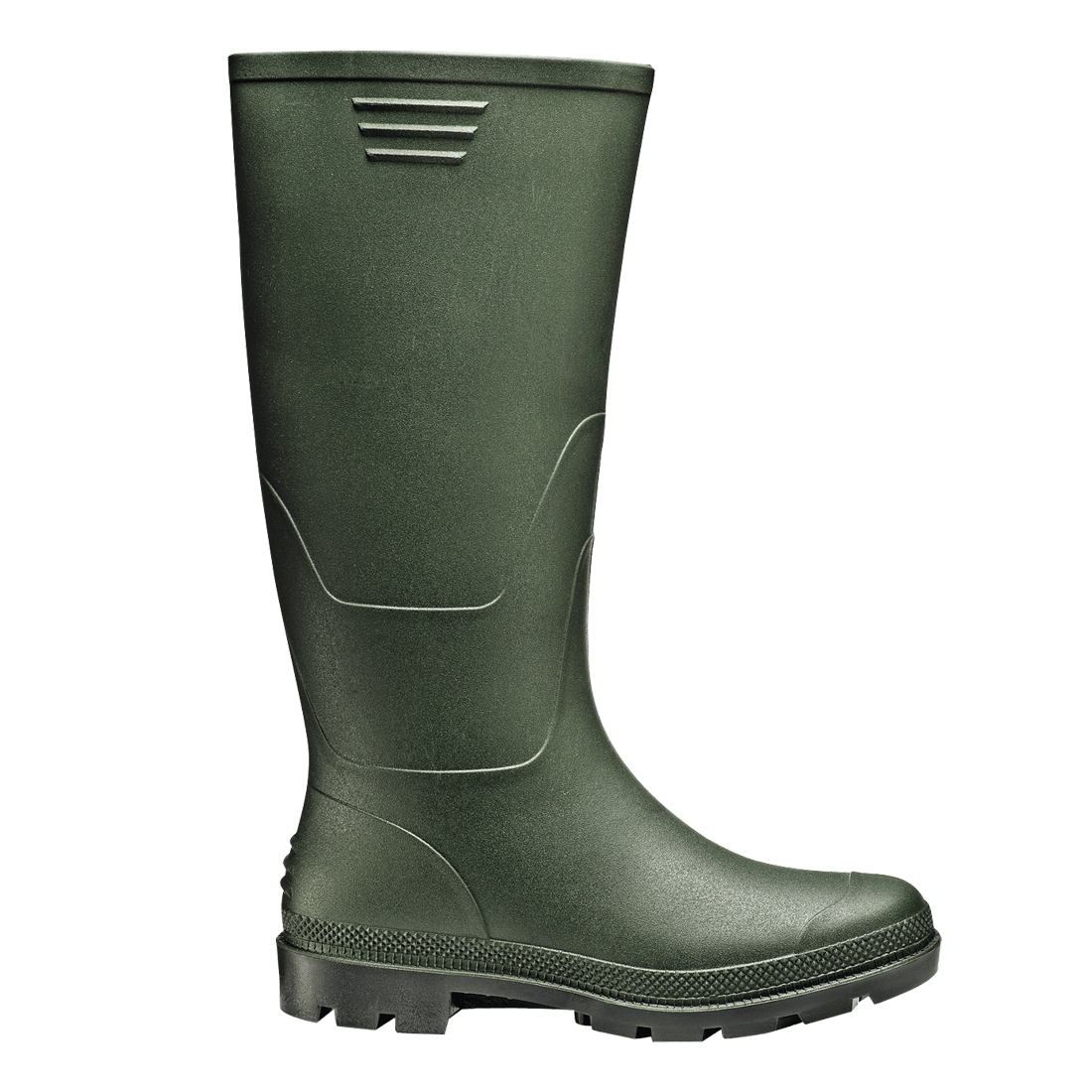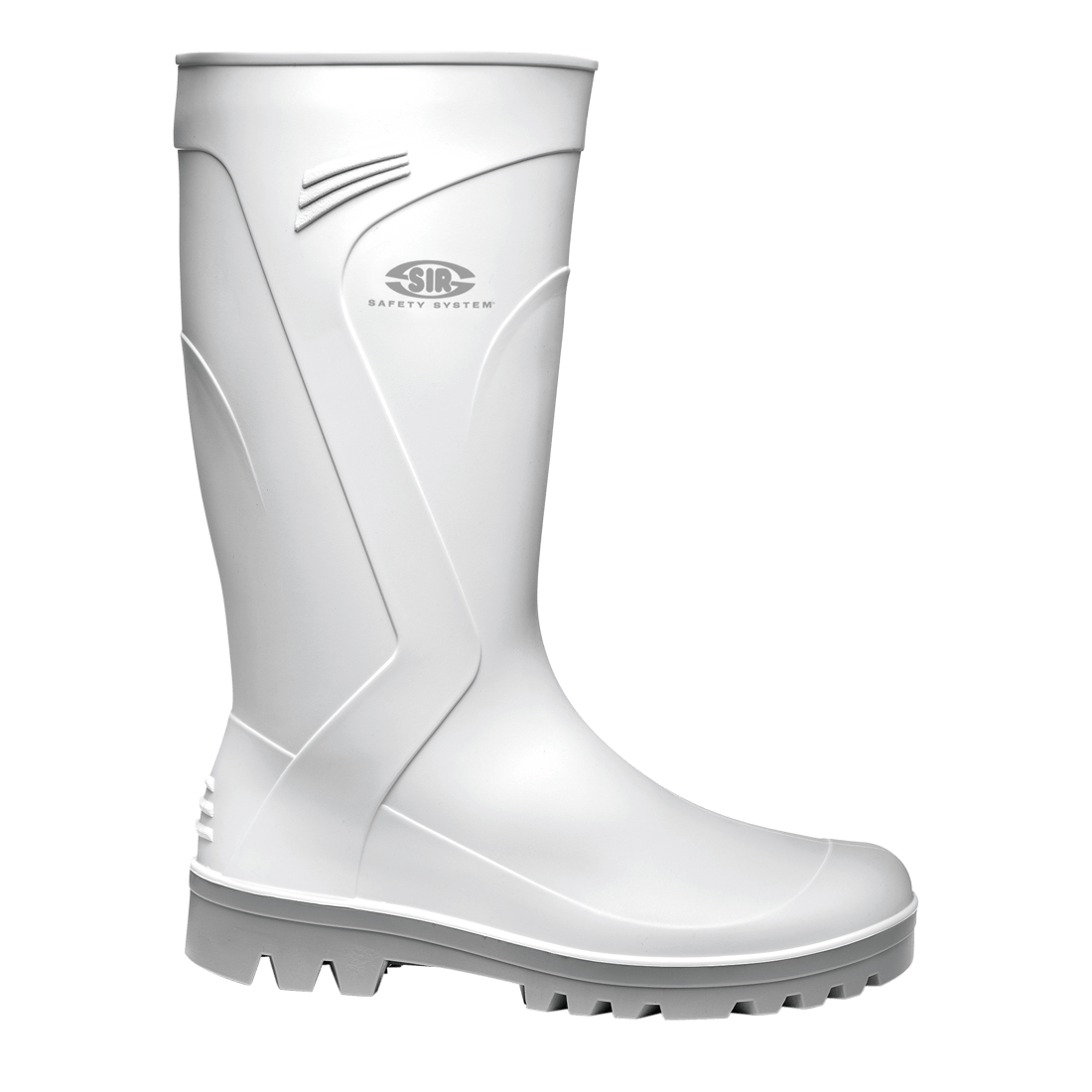Footwear for professional use is Personal Protective Equipment (PPE) designed and manufactured to protect the worker’s feet from various risks: mechanical (slipping, impact, compression, puncture, cut etc.), chemical (contact with hydrocarbons, mineral oils etc.), physical (moisture, water, heat, cold etc.) and electrical (antistatic properties, conductive properties etc.).
It is subject to the essential requirements set forth by EU Regulation 2016/425 for ergonomics, harmlessness, comfort and efficacy. The protective features of the footwear vary according to the specific needs of use. The selection of the right footwear for professional use depends on its protective features and on the risks in the workplace.
Available in a variety of materials, footwear for professional use is divided into two classes:
Footwear in leather or other materials, excluding shoes entirely in rubber or polymers (e.g., shoes with leather uppers and sole in polyurethane or rubber).
Footwear entirely in rubber or polymers (e.g., boots entirely in rubber or PVC).
Both classifications may also be divided into a further 3 types, based on the protection features:
Safety footwear fitted with protective toecap against impacts with energy up to 200 J or a compression load up to 15 kN (in compliance with European harmonized standard EN ISO 20345).
Protective footwear fitted with protective toecap against impacts with energy up to 100 J or a compression load up to 10 kN (in compliance with European harmonized standard EN ISO 20346).
Work footwear without protective toecap (EN ISO 20347).
All footwear for professional use must comply with some basic requirements concerning duration, comfort and harmlessness of the materials.
They must also assure slipping resistance with specific protection concerning the reduction of the slipping hazard on wet surfaces, divided into three levels:
SRA. Test carried out on ceramic floor covered with water and detergent.
SRB. Test carried out on steel floor covered with glycerine.
SRC. Both the tests described above (SRA + SRB).
In addition, supplementary protection may be required against specific risks (mechanical, chemical, physical and electrical risk), such as: antistatic properties, energy absorption in the heel area, sole resistance to hydrocarbons, water penetration and absorption through the upper, penetration resistance of the outsole, heat or cold insulation, metatarsal protection.
Finally, certain supplementary protection categories are set out which sum up the most common protective features, divided into several markings:
S1. includes closed heel area, antistatic properties, energy absorption properties in the heel area and sole resistant to hydrocarbons.
S2. like S1 + penetration resistance and water absorption through the upper.
S3. like S2 + puncture resistant outsole and deep sole grooves.
S4. like S1 (only valid for class II entirely rubber or polymer footwear).
S5 like S4 + puncture resistant outsole and deep sole grooves.
The protection features offered by the footwear can be understood from the markings on the footwear, providing the following indications:
marking;
shoe size;
manufacturer’s name or logo;
article code;
manufacturing date;
Schuhe für den professionellen Einsatz sind Persönliche Schutzausrüstungen (PSA), die entwickelt und hergestellt werden, um die Füße des Trägers vor verschiedenen Risiken zu schützen: mechanisch (Ausrutschen, Stöße, Druck, Einstiche, Schnitte usw.), chemisch (Kontakt mit Kohlenwasserstoffen, Mineralölen usw.), physikalisch (Feuchtigkeit, Wasser, Hitze, Kälte usw.) und elektrisch (antistatische Eigenschaften, leitfähige Eigenschaften usw.).
Sie unterliegen den durch die Verordnung (EU) 2016/425 vorgeschriebenen grundlegenden Anforderungen an Ergonomie, Unbedenklichkeit, Komfort und Wirksamkeit. Die Schutzeigenschaften von Schuhen sind unterschiedlich, je nach den spezifischen Anforderungen bei der Verwendung. Die Wahl des richtigen Schuhwerks für den beruflichen Einsatz hängt von den Schutzeigenschaften der Schuhe und den am Arbeitsplatz vorhandenen Risiken ab.
Erhältlich in verschiedenen Materialien, werden Schuhe für den professionellen Einsatz in 2 Klassen unterteilt:
I. Schuhe aus Leder oder anderen Materialien, ausgenommen Schuhe, die vollständig aus Gummi oder Polymer bestehen (z. B. Schuhe mit Oberteil aus Leder und Sohlen aus Polyurethan oder Gummi).
II. Schuhe, die vollständig aus Gummi oder polymeren Materialien bestehen (z. B. Stiefel, die vollständig aus Gummi oder PVC bestehen).
Beide Klassifizierungen, basierend auf den Schutzmerkmalen, können in 3 weitere Typen unterschieden werden:
Sicherheitsschuhe, die mit Zehenschutzkappe zum Schutz gegen Stöße mit Energie bis zu 200 J oder Druckbelastung bis zu 15 kN ausgestattet sind (gemäß der harmonisierten europäischen Norm EN ISO 20345).
Schutzschuhe mit Zehenschutzkappe zum Schutz gegen Stöße mit Energie von bis zu 100 J oder einer Druckbelastung von bis zu 10 kN (gemäß der harmonisierten europäischen Norm EN ISO 20346).
Berufsschuhe ohne Zehenschutzkappe (EN ISO 20347).
Alle Schuhe für den professionellen Einsatz müssen bestimmte Grundanforderungen hinsichtlich Haltbarkeit, Komfort und Unbedenklichkeit der Materialien erfüllen. Sie müssen auch Rutschfestigkeit mit spezifischem Schutz in Bezug auf die Verringerung der Rutschgefahr auf nassen Oberflächen garantieren, unterteilt in drei Stufen:
SRA. Test auf einem Keramikboden, der mit Wasser und Reinigungsmittel bedeckt ist.
SRB. Test auf einem mit Glyzerin beschichteten Stahlboden.
SRC. Beide oben beschriebenen Tests (SRA + SRB).
Schließlich gibt es eine Reihe von zusätzlichen Schutzkategorien, die die gängigsten Schutzmerkmale zusammenfassen, unterteilt in verschiedene Kennzeichnungen:
01. Umfasst einen geschlossenen Fersenbereich, antistatische Eigenschaften, Energieabsorption im Fersenbereich und Sohlenbeständigkeit gegen Kohlenwasserstoffe.
02. Wie 01 + Widerstand des Obermaterials gegen Eindringen und Absorption von Wasser.
03. Wie 02 + Widerstand gegen Perforation der Schuhunterseite und Profilsohle.
04. Wie 01 (gilt nur für Vollgummi- oder Polymer-Schuhe der Klassifizierung II).
05. Wie 04 + Widerstand gegen Perforation der Schuhunterseite und Profilsohle.
EN ISO 20347
Unter diese Norm fallende Produkte


